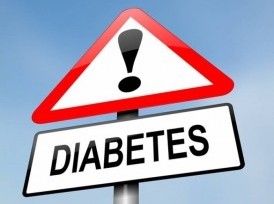DrCarney.com Blog
Diabetes! What is it? What’s the risk? What can I do?
The percentage of diabetes cases are skyrocketing in the US and many parts of the world. How do you know if you are at risk? Is it genetic? Is it lifestyle? Is it preventable?
A clear understanding, even if simplified, is your best defense against becoming diabetic and becoming non-diabetic if you already are.
By definition, diabetes is the condition of chronic high blood-sugar. There are two basic types of diabetes; Type-1 and Type-2. Both types are due to an insulin issue.
Type-1 diabetes is due to an autoimmune condition where the insulin producing cells in the pancreas have been amputated by the immune system. As with any amputation, they will not grow back. This leaves the victim incapable of producing any insulin, however, as with most any amputation, prosthetics are available. For the Type-1 diabetic that is a glucometer, needles and insulins. Diligent management can provide the Type-1 diabetic a perfectly normal, healthy, issue free life.
Type-2 diabetes is an Insulin Resistance issue. This is a condition where the effectiveness of insulin is impeded; restricting glucose – restricting energy. Type-2 diabetes is by far the most common. In fact, the average Type-1 diabetic is typically also Type-2. In almost all cases, Type-2 diabetes is curable.
What is it? Insulin is a required hormone that transports glucose (fuel sugar) across all cell walls to be converted to energy. Since life requires energy, a ready supply of glucose is likewise required. This supply is called Blood-Sugar or Blood-Glucose and is regulated to maintain a balance between sufficient and excess. Excess glucose is toxic, so the balance is vital. The balance is maintained by the glucose “burn-rate” verses supply rate. When the burn-rate is too slow or impeded, un-consumed glucose builds up in the blood stream. This is called Insulin Resistance, also known as diabetes.
The risks may be higher than you might think. Diabetic symptoms do not appear until the condition is very advanced. As insulin resistance mounts, the pancreas outputs more and more insulin to keep up. Not until the pancreas is overwhelmed are any symptoms noticed. So, how do you know where you stand? Blood-work can help. Blood-insulin is considered normal between 2.6 and 24.9 uIU/ml, however, the higher the numbers, even in the normal range, the greater the risk. A1C numbers close to 6% is nudging diabetes. Blood-insulin to blood-glucose ratio is a good metric for insulin resistance. Low numbers of blood-insulin with low numbers of blood-glucose indicates very low insulin resistance. Increased blood-insulin numbers is a direct indication of increased insulin resistance. Rising blood-glucose numbers, even if still normal, indicate that the pancreas is near capacity and close to being overwhelmed. Fasting blood-sugar should be under 100, preferably in the 80’s or below. If fasting numbers are good, but exceeds 140 mg/dl after a large high carbohydrate meal, indicates your pancreas is on the edge of being overwhelmed. This is pre-diabetes.
However, you don’t really need all that testing stuff to know if you are at risk. An examination of your diet is evidence enough. Dietary fat is a good metric since insulin resistance is caused by and follows fat. This is why being overweight is generally associated with diabetes (animal products also contribute to insulin resistance). If your dietary fat is faithfully below 10% you are essentially diabetes proof. If your dietary fat is between 10% and 25% you are safe if you are very active, because aerobic exercise has a lowering effect on insulin resistance. If your dietary fat exceeds 25% you are at risk regardless of exercise. Since insulin resistance is also energy resistance, being tired is another indicator. For example: if you dread a task because it requires more effort than you are interested in exerting; that is tired. Not tired is if you are eager to perform a task, because it requires lots of effort.
The very fortunate thing is that diabetes is easy to prevent and reverse. Simply cut the fat and break a sweat. Yep, it’s that easy.
DrCarney.com allows Member Blogs. Opinions in Member Blogs are views of the Member Blogger and not necessarily of Dr. Carney. Registered Users may request a FREE upgrade for blogging permission. Bloggers agree to support Dr. Carney's Starch-Smart-System.
When you subscribe to the blog, we will send you an e-mail when there are new updates on the site so you wouldn't miss them.




